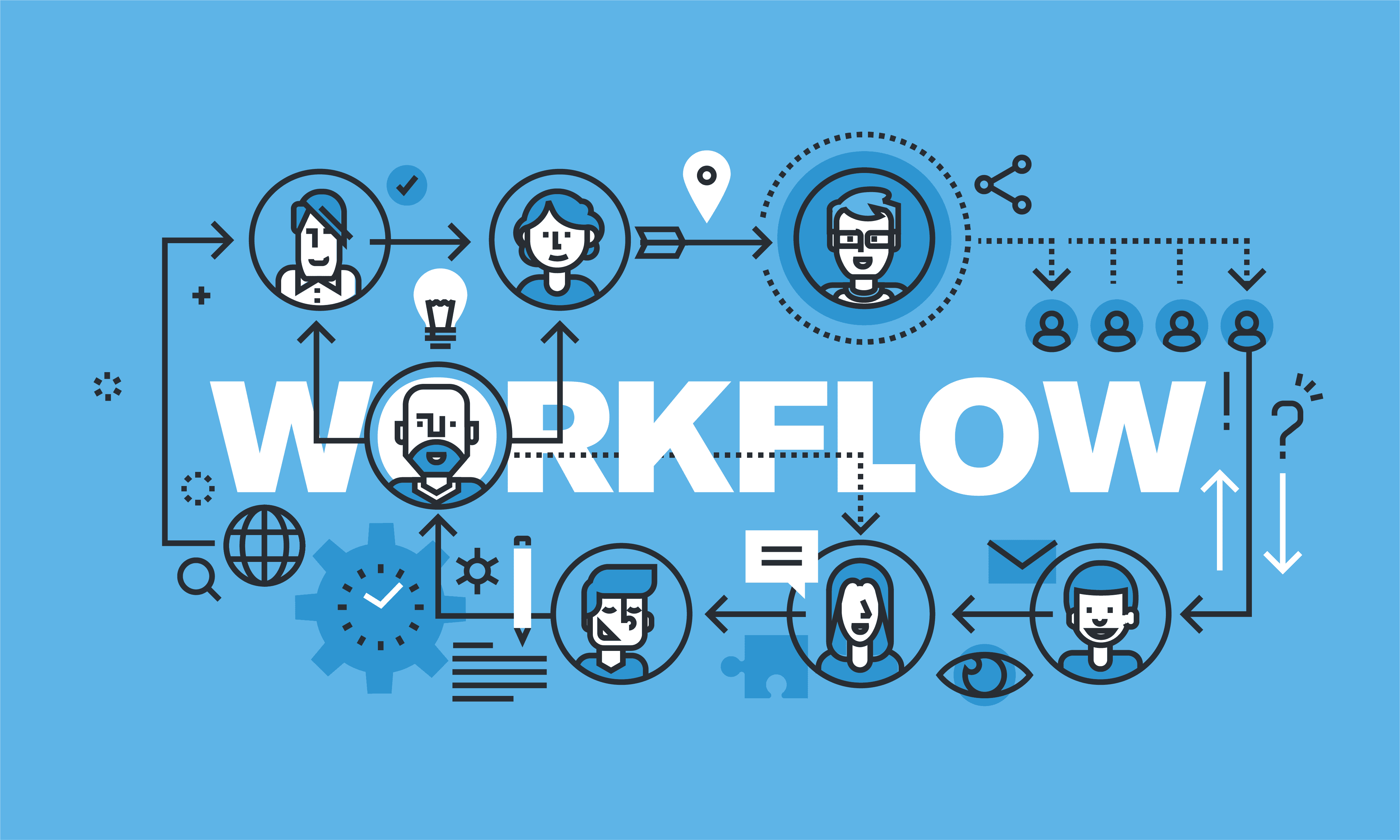 If you’re not up to your eyeballs planning for your fall event or year-end fundraising efforts, there’s a good chance you (or members of your team) have dipped a toe in the waters of 2019 planning.
If you’re not up to your eyeballs planning for your fall event or year-end fundraising efforts, there’s a good chance you (or members of your team) have dipped a toe in the waters of 2019 planning.
Looking forward to the New Year ahead can be an exciting, refreshing process. Sure, you might take the time to review what has worked -and what hasn’t – year-to-date, but for many organizations January 1 represents a fresh start where you can put into practice all of the new tips and tricks you’ve learned.
And one of the topics I’ve been hearing a lot about? Workflows.
What’s a workflow? Is it a process?
According to the Merriam-Webster dictionary, a workflow represents “the sequence of steps involved in moving from the beginning to the end of a working process.” It’s similar to a process in that it’s a set of sequential activities and tasks that, once complete, accomplishes an organizational goal. Confused? It’s understandable as both terms do really sound the same, with the end goal being a major difference:
- A workflow implies finishing a certain task
- A process involves accomplishing an organizational goal
For example, securing a hotel for an annual conference is a task – you have to research options, visit sites, negotiate the contract and have members of the leadership team sign the contract. An organizational goal is often higher (macro) level, e.g. growing an annual conference attendance by 50 percent.
Considering this, it shouldn’t be too surprising that the terms are used interchangeably. In a lot of cases, a process will be exactly the same as a workflow.
Starting Small: Incremental Process Improvements with Workflows
Workflows are familiar to all of us, for example, a morning routine you rely on to get out the door or help a child fall asleep at night. Workflows allow for the systematic completion of tasks, while the collection of workflows within a process allow your organization to accomplish goals in a repeatable (scalable) way through the consistent investment of resources and a sequence of events.
There’s no shortage of books, workshops, documents and blogs to help commercial sector businesses bring workflows and process to their companies but nonprofits, are different. They have potentially specific and niche challenges that other organizations may not face. Nonprofits may:
- Lack time to properly develop and design the process
- Lack internal resources to facilitate the process or external consultants to develop the process on their behalf
- Lack buy-in from leadership to endorse the process
Workflows and Process in Practice
Don’t get overwhelmed. Start small. Connect workflows to those activities with the most opportunity to produce the biggest impact. Think about the current systems you have in place and how well they support improvements to your staff’s productivity and the experience of your constituents be they members or donors.
Analyzing your existing systems and workflows is the first step towards identifying opportunities for an improved process. Look to a workflow when multiple tasks are needed to complete something important on a recurring basis.
Let’s take a common example – a membership renewal. Renewals are vital to your organization’s success (they’re important). Typically, a renewal includes multiple steps, from a reminder email to a final thank you for renewing. And renewals happen on a recurring basis – either after a specific period of time or on a calendar date.
But, in addition to considering the individual events in the sequence, committing to support member renewals via a process provide additional opportunities on how an organization can revisit the entire renewal experience. The workflow may address alerting a member to the renewal, the transaction and a simple confirmation. However, for an association, a renewal process review may include:
- The overall value the organization provides to renewing members
- How value has been delivered to members over the course of a year
- How the organization communicates the value delivered and makes the renewing member internalize the value
- And more…
It’s a larger conversation, but one worth exploring to ensure you’re identifying all opportunities for improvement. Write down the process as you understand it, taking the time to document each step. Or, even better, take time to experience the existing process first hand before introducing improvements – if you can, reach out to your constituents to understand their point of view or what changes they might make.
With an outline of the existing process, you can start implementing change. Don’t hesitate to start small, changing a handful of steps at a time to ensure you’re able to measure the effectiveness of the processes you’ve introduced.
